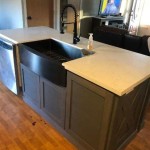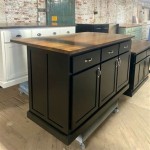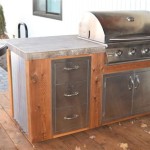Taj Mahal Quartzite Kitchen Countertops: A Comprehensive Guide
Taj Mahal quartzite has emerged as a highly sought-after material for kitchen countertops, blending the aesthetic appeal of marble with the durability and resilience associated with granite. This natural stone offers unique characteristics that make it an excellent choice for homeowners seeking a sophisticated and long-lasting surface for their kitchens. This article provides an in-depth exploration of Taj Mahal quartzite, covering its geological origins, distinguishing features, benefits, maintenance requirements, and considerations for incorporating it into kitchen designs.
Quartzite, a metamorphic rock, originates from sandstone that has undergone immense heat and pressure deep within the Earth's crust. This transformative process fuses the quartz grains together, creating a dense and remarkably strong material. The veining and coloration found in quartzite are a result of mineral impurities present during the metamorphic process. These impurities, often iron oxides and other minerals, create the unique patterns and hues that distinguish different varieties of quartzite. Taj Mahal quartzite, specifically, is characterized by its warm, creamy background and distinctive gold and beige veining, resembling the elegant patterns found in marble.
While often confused with marble due to its similar appearance, quartzite boasts significantly superior hardness and resistance to etching and staining. Marble, being a softer stone composed primarily of calcium carbonate, is susceptible to damage from acidic substances such as lemon juice, vinegar, and common household cleaners. Quartzite, on the other hand, is highly resistant to these substances, making it a more practical choice for kitchen countertops where spills and splatters are common occurrences. This inherent durability is a key factor contributing to the growing popularity of Taj Mahal quartzite among homeowners and designers alike.
Understanding the Unique Characteristics of Taj Mahal Quartzite
Taj Mahal quartzite stands out due to its unique combination of aesthetics and performance. Its creamy, off-white background is often punctuated by flowing veins of gold, beige, and occasionally subtle hints of brown or gray. This color palette provides a warm and inviting ambiance, complementing a wide range of kitchen design styles, from traditional to contemporary. The veining patterns vary from slab to slab, ensuring that each installation is truly unique. This natural variation is a desirable characteristic for many homeowners seeking a countertop that adds character and individuality to their kitchen space.
The subtle variations in color and veining within Taj Mahal quartzite slabs also contribute to its versatility. It pairs well with both light and dark cabinetry, and its neutral tones allow it to blend seamlessly with a variety of backsplash materials and flooring options. Whether the kitchen design incorporates stainless steel appliances or features warmer, more traditional elements, Taj Mahal quartzite can serve as a unifying element, tying the entire space together.
Beyond its aesthetic appeal, Taj Mahal quartzite offers exceptional performance characteristics. Its hardness makes it highly resistant to scratches and chips, ensuring that the countertop maintains its pristine appearance for years to come. Its low porosity, relative to marble, further contributes to its resistance to staining and bacterial growth. This makes it a hygienic and easy-to-clean surface, ideal for food preparation and everyday use.
Benefits of Choosing Taj Mahal Quartzite for Kitchen Countertops
Selecting Taj Mahal quartzite for kitchen countertops offers a multitude of benefits that extend beyond its visual appeal. These benefits contribute significantly to the long-term value and enjoyment of the kitchen space.
Durability and Longevity: As previously mentioned, the inherent hardness and density of quartzite make it exceptionally durable. It withstands the rigors of daily use, resisting scratches, chips, and stains that can easily mar the surface of softer stones like marble. This durability translates to a longer lifespan for the countertop, reducing the need for frequent repairs or replacements. With proper care and maintenance, a Taj Mahal quartzite countertop can maintain its beauty and functionality for decades.
Low Maintenance: Compared to other natural stone options, Taj Mahal quartzite requires relatively little maintenance. Regular cleaning with mild soap and water is typically sufficient to keep the surface looking its best. While sealing is recommended to further enhance its stain resistance, it does not require the frequent resealing that is often necessary with marble. This ease of maintenance makes it a practical choice for busy homeowners who want a beautiful and durable countertop without the added burden of extensive upkeep.
Increased Home Value: Investing in high-quality materials such as Taj Mahal quartzite can significantly enhance the value of a home. Potential buyers are often drawn to the beauty and durability of natural stone countertops, which are seen as a sign of quality and craftsmanship. The timeless elegance of Taj Mahal quartzite, combined with its practical benefits, makes it a desirable feature that can contribute to a higher resale value.
Unique and Natural Beauty: The natural variations in color and veining found in Taj Mahal quartzite ensure that each countertop is a one-of-a-kind work of art. The warm, inviting tones and swirling patterns add character and sophistication to the kitchen space, creating a focal point that is both visually stunning and functionally practical. This natural beauty is a key differentiator that sets Taj Mahal quartzite apart from manufactured countertop materials.
Maintaining and Caring for Taj Mahal Quartzite Countertops
While Taj Mahal quartzite is known for its durability and relatively low maintenance requirements, proper care and maintenance are essential to preserving its beauty and extending its lifespan. Following a few simple guidelines can help ensure that the countertop remains in pristine condition for years to come.
Regular Cleaning: Daily cleaning with a mild soap and water solution is typically sufficient to remove spills, splatters, and everyday grime. Avoid using abrasive cleaners or scouring pads, as these can scratch the surface. A soft cloth or sponge is the best choice for cleaning Taj Mahal quartzite countertops. It is also important to wipe up spills promptly, especially acidic substances like lemon juice and vinegar, to prevent potential staining.
Sealing: Although Taj Mahal quartzite is less porous than marble, sealing is still recommended to provide an extra layer of protection against staining. A high-quality stone sealer should be applied periodically, following the manufacturer's instructions. The frequency of sealing will depend on the specific sealer used and the level of use the countertop receives. A simple water test can help determine if resealing is necessary. If water beads up on the surface, the sealer is still effective. If the water soaks into the stone, it is time to reseal.
Heat Protection: While quartzite is heat resistant, prolonged exposure to high temperatures can potentially damage the surface. It is always advisable to use trivets or hot pads under hot pots, pans, and other cooking utensils to prevent thermal shock and potential discoloration. Avoid placing hot items directly on the countertop for extended periods of time.
Preventing Scratches: Although Taj Mahal quartzite is highly scratch resistant, it is still possible to scratch the surface with sharp objects. Avoid cutting directly on the countertop and use cutting boards to protect the surface from knife marks. Also, be mindful of dragging heavy objects across the countertop, as this can also cause scratches.
Professional Cleaning and Restoration: For more stubborn stains or damage, it is best to consult with a professional stone restoration company. Attempting to remove stains or repair damage yourself can potentially worsen the problem. A professional can assess the situation and recommend the appropriate cleaning or restoration techniques to restore the countertop to its original beauty.
In conclusion, Taj Mahal quartzite offers a compelling combination of beauty, durability, and relatively low maintenance, making it an excellent choice for kitchen countertops. Its unique veining patterns, warm color palette, and resistance to etching and staining make it a practical and aesthetically pleasing option for homeowners seeking a long-lasting and sophisticated countertop surface. By understanding its characteristics, benefits, and maintenance requirements, homeowners can make an informed decision and enjoy the beauty and functionality of Taj Mahal quartzite in their kitchens for years to come.

Understanding The Durability Of Taj Mahal Quartzite United Granite Ny Marble Countertops

Why Is Taj Mahal Quartzite Perfect For Your Kitchen Remodel

Incorporating Taj Mahal Quartzite Rocky Tops Custom Countertops In Nashville

A Comprehensive Guide To Taj Mahal Quartzite Exploring The Beauty Of This Natural Stone Granite Countertop Warehouse

Taj Mahal Quartzite Virginia Maryland Dc Exclusive Countertops And Slabs

17 Best Taj Mahal Quartzite Ideas Kitchen Remodel New

Taj Mahal Quartzite Cdk Stone

Taj Mahal Quartzite Kitchen Countertops Project In Frisco Tx Granite Republic

Taj Mahal Quartzite Fusion Kitchen New Orleans By Sheppard S Countertops Houzz

Taj Mahal Quartzite Virginia Maryland Dc Exclusive Countertops And Slabs








